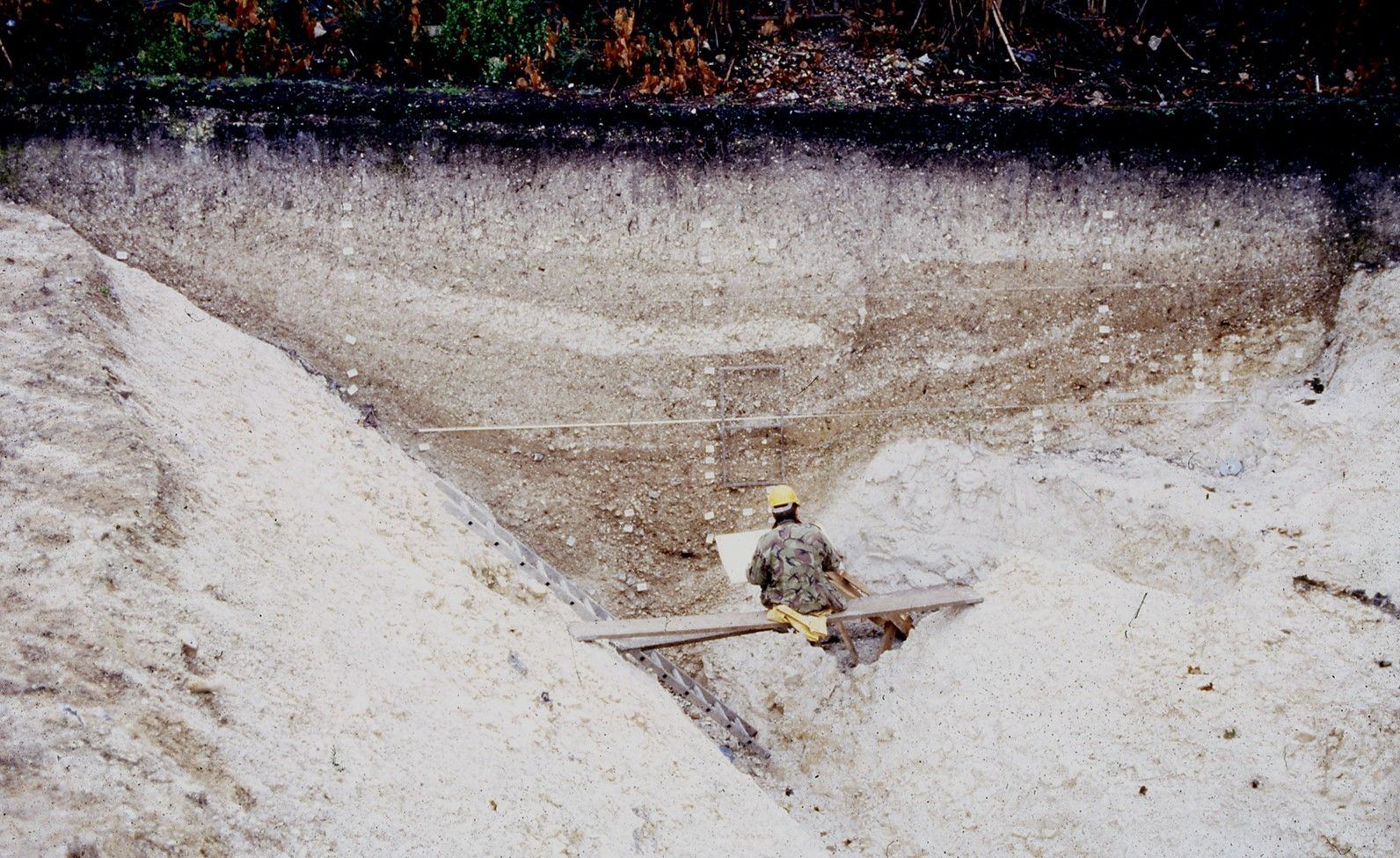Part four of a nine part series of articles from Mark Barden, our Community Cultural Experience Manager here at Hampshire Cultural Trust, 'digging the dirt' on all things archaeology.
Episode 4: Site recording
Archaeologists use a range of tools to excavate and record the archaeology, from mechanical diggers for clearing top soil to trowels and brushes once the archaeology has been exposed. Once the site has been cleaned it is photographed and planned before any actual digging starts.

Archaeological deposits are excavated in ‘stratigraphic’ sequence, in reverse order to the way they were deposited, the latest first, the first last. Each of these ‘layers’ (a floor, a yard, a road) is given a ‘context’ number as are any features associated with them (a wall, a posthole, a pit).
Details of each context are entered on a context sheet which will reference the surrounding layers, above and below, other features associated worth that layer, such as posy holes or walls. Each sheet will also be cross-referenced with site plans and photographs.
The objects found in these ‘contexts’ ( pottery, tile, bone) are also given that number, put in labelled bags or trays and later, when cleaned, marked with the same number. Identifying the individual layers on the site, the stratigraphy, allows archaeologists to work out the sequence of activity, but it is the objects found in the layers that allows them to date the site.


This is why simply digging a hole in the ground to get at an object causes such damage. Once the object is removed from its “context” it makes it difficult to relate it to other material that may have come from that site. It also means that if the site is properly excavated in the future items that may be key to dating the site and telling its story are missing.
Some objects are given an additional number that is specific to that object, usually metal or organic items, and are referred to as ‘small finds’, although they can vary in size from a coin to a lead coffin. This allows them to be individually traced through the post-excavation process and distinguishes them from ‘bulk’ finds such as building materials.
Today there are a range of digital techniques used in site recording such as GPS, to accurately plot excavated features, tablet computers, relational databases, digital cameras, 3d laser scanners and unmanned aerial vehicles, drones.

But archaeological excavation remains a very labour intensive process and shovels, picks, buckets, wheelbarrows and, of course, the trowel, are still the digger’s stock in trade.
If you have enjoyed Culture on Call and you are able to make a donation, any support you can give will help us keep people connected.



